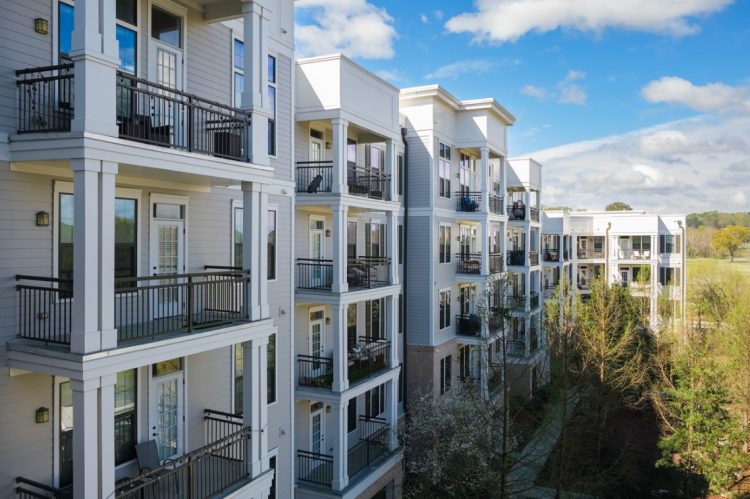Selling a condo for the first time can sometimes be challenging. My guide will simplify the process and help you achieve a successful sale.
I will provide you with the following helpful information to help you come out on top with your first condominium sale:
- How to prepare your condo for sale with a pre-sale inspection
- Practical strategies for pricing and marketing your condo
- Important legal considerations and paperwork requirements
With three decades of experience selling condos, I can say that there are specific common denominators that will ensure your success.
Let’s examine all the steps to get you ready for a sold sign and heading to the closing table.
Step 1: Get a pre-sale condo inspection
Understanding how to prepare for a condo inspection is essential. Maximum Real Estate Exposure has an excellent condominium checklist worth following. A pre-sale condo inspection can identify potential issues before listing your property.
- Hire a professional inspector:
- Look for certified inspectors with experience in condo inspections. Their expertise will ensure a thorough evaluation of the property. I recommend excellent inspectors to all my clients; your agent can do the same.
- Check reviews and ask for references to choose a reputable inspector.
- Review the report:
- Once you receive the inspection report, review it carefully to understand the condition of your condo.
- Focus on significant issues like plumbing, electrical systems and structural components.
- Address major issues:
- Prioritize fixing any significant problems identified in the inspection report. This could include repairing leaks, updating electrical systems, or fixing structural issues. Selling a condo as-is isn’t wise.
- Consider minor repairs and cosmetic improvements to enhance the overall appeal.
- Disclose inspection results:
- Transparency builds trust with potential buyers. Share the inspection results and the repairs you’ve made.
- Provide receipts and documentation of any work done to show buyers that the condo is well-maintained.
By resolving issues early, you enhance your condo’s appeal and value. The home inspection process for townhouses is the same.
Step 2: Set the right price
Proper pricing of your condo attracts buyers and ensures a quick sale. Pricing any real estate incorrectly leads to failure.
- Research the market:
- Look at recent sales of similar condos in your area. Pay attention to size, location, amenities and condition.
- Use online real estate platforms to gather data on comparable properties.
- Consult a real estate agent:
- An experienced real estate agent can provide a comparative market analysis (CMA), offering insights into the best pricing strategy.
- Agents can also advise on current market trends and buyer preferences.
- Consider market conditions:
- Adjust your price based on the current market. Due to higher demand, you can price higher in a seller’s market. However, you may need to be more competitive in a buyer’s market.
- Stay updated on economic factors and local developments that might impact real estate prices.
- Set a competitive price:
- Pricing slightly below market value can generate more interest and multiple offers, potentially driving up the final sale price.
- Avoid overpricing. It is the worst thing you can do, as it can deter buyers and cause your property to sit on the market too long.
Accurate pricing prevents your condo from lingering on the market.
Step 3: Home staging tips
Staging makes your condo look inviting and spacious. Preparing to sell is worth the effort.
- Declutter and depersonalize:
- Remove personal items like family photos, collections and memorabilia. This helps buyers imagine themselves living in the space.
- Clear out excess furniture and belongings to make rooms appear larger and more functional.
- Clean thoroughly:
- Ensure every corner is spotless. Pay special attention to kitchens, bathrooms and floors.
- Consider hiring professional cleaners for a deep clean, including carpets and windows.
- Enhance curb appeal:
- Maintain the exterior and common areas. First impressions matter, so ensure the entrance is clean and welcoming.
- Add potted plants or fresh flowers to the entrance to create a warm, inviting look.
- Use neutral colors:
- Paint walls in neutral tones to appeal to a broader audience. Neutral colors help buyers envision their decor.
- Repaint any bold or bright walls with soft, neutral shades.
- Arrange furniture strategically:
- Highlight the best features of each room by arranging furniture to maximize space and functionality.
- Use mirrors and lighting to create an airy, bright atmosphere.
A well-staged condo helps buyers envision themselves living there. Consider this all part of proper condo maintenance.
Step 4: Marketing and advertising
Effective marketing attracts more potential buyers.
- Hire a professional photographer:
- This is one of the best decisions you can make. Quality photos make your listing stand out. Professional photographers know how to capture the best angles and lighting.
- Include photos of all critical areas, highlighting views, amenities and spacious rooms.
- Create a compelling listing description:
- Understanding how to write compelling house descriptions is essential. In your listing description, highlight key features and amenities and any recent upgrades or unique selling points.
- Use descriptive language to describe what it’s like to live in your condo and the surrounding area.
- Utilize online platforms:
- List your condo on major real estate websites like Zillow, Realtor.com and Redfin. These platforms reach a large audience.
- Ensure your listing is complete with all relevant details and high-quality photos.
- Leverage social media:
- Share your listing on social media to reach a broader audience. Use platforms like Facebook, Instagram and LinkedIn.
- Encourage friends and family to share your post to increase visibility.
Step 5: Legal considerations and paperwork
Understanding legal aspects ensures a smooth transaction.
- Review condo association rules:
- Understand any restrictions or requirements imposed by your condo association. This can include rules on signage, renovations and leasebacks.
- Obtain a copy of the association’s rules and regulations to share with potential buyers. It should be part of your research when buying in a neighborhood.
- Gather necessary documents:
- Prepare your condo’s title, recent tax statements and association documents. Buyers will need these to evaluate the property.
- Include copies of recent utility bills and any warranties for appliances or systems.
- Hire a real estate attorney:
- They can help with contracts and legal issues. An attorney ensures all paperwork is in order and protects your interests during the sale.
- Consult your attorney before signing any agreements.
- Prepare a seller’s disclosure:
- Be transparent about the condo’s condition. Disclose any known issues or repairs that have been made.
- Use standard forms provided by your state or real estate agent.
- Understand closing costs:
- Be aware of the fees and expenses you’ll need to cover. These can include agent commissions, transfer taxes and attorney fees.
- Budget for these costs to avoid surprises at closing.
Proper legal preparation prevents delays and complications during the sale.
Conclusion
Selling your condo successfully involves preparation, strategic pricing, effective marketing and legal awareness.












